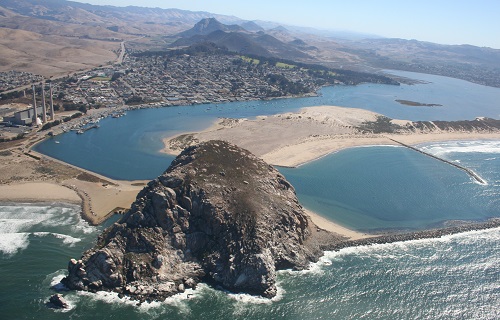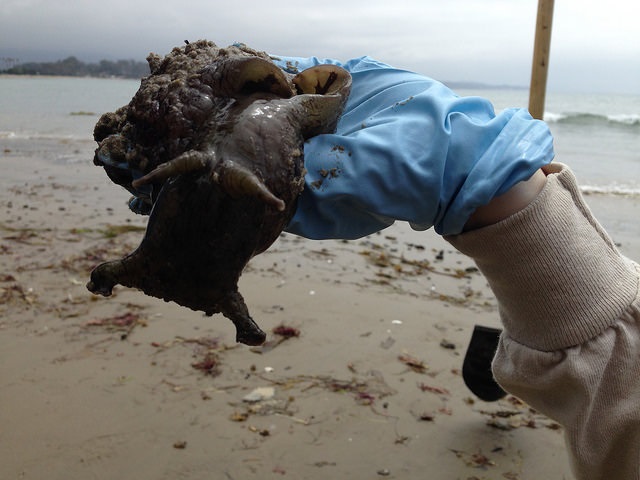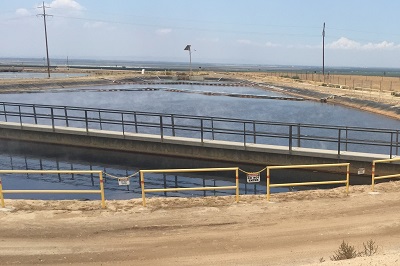
California Convention Set to Build Power
Coastal Commission Staff: Offshore Fracking Needs Commission Approval
Poison Pits Plague California
Don't Miss Out on the Rooftop Revolution

California Convention Set to Build Power
By Kathryn Phillips
Sierra Club California’s annual convention planners have pulled together a terrific program that will send participants home with information and tools to build a stronger, more powerful Club.
It will help Club members in California successfully respond at their local chapter level to all varieties of change in the state—political, demographic, and environmental.
Our keynote speaker will be Manuel Pastor, a professor of Sociology and American Studies and Ethnicity, and director of the Program for Environmental and Regional Equity, at the University of Southern California. Professor Pastor’s expertise includes demographic change, economic inequality, and community empowerment. He has been a leading voice in a range of important environmental policy discussions statewide, from climate change to state parks.
The two-day convention runs from Saturday morning, October 10, through midday on Sunday, October 11. It takes place in San Luis Obispo County at the Rancho El Chorro park and public meeting facility. If you haven’t signed up already, click here to register online.
This year’s convention will also feature working sessions for volunteers to improve their skills for meeting with legislators in their district offices, creating welcoming meetings and chapters, and incorporating diversity, equity and inclusion into the local chapter ethos. Plus there will be opportunities to learn about the latest achievements at the State Capitol and challenges for the environment.
Some Sierra Club members attend the convention as voting delegates representing their local chapters. But you don’t have to be a voting delegate to attend.
Every Sierra Club member is welcome to attend, and admission is low: Attending the entire weekend, including rustic lodging in a bunkhouse-style cabin or pitching your own tent, from Friday evening through Sunday morning, costs just $60. Lunch and dinner on Saturday and breakfast on Sunday are included. If you attend for just one day, the fee is $30. Even then, nobody is turned away from the meetings due to lack of funds and some scholarships are available.
There are also reasonably priced motels in neighboring communities (Morro Bay, Los Osos, San Luis Obispo, etc.) within a 15-minute drive of the park.
If you’re a regular convention attendee, consider using this year’s event as an opportunity to introduce a new Club member to Sierra Club California. Pass along this article and encourage them to attend.
If you have never attended the convention, whether you’re a new or longtime Club member, sign up now to attend this October’s event. You’ll make new friends and get a chance to learn more about how you can be a more effective Club member.

Coastal Commission Staff: Offshore Fracking Needs Commission Approval
By Mike Thornton
Any fracking taking place at the offshore oil islands near the City of Long Beach will have to obtain a California Coastal Commission (CCC) permit before it can go forward, the commission staff has concluded.
The Coastal Commission’s deputy director in charge of energy and ocean resources oversight, Allison Dettmer, has informed the City of Long Beach and its corporate partners that they must obtain a permit issued by the CCC before any fracking operations take place at the THUMS/Astronaut, “Oil Islands” in San Pedro Bay.
Dettmer says that her agency has taken the position that any fracking within the state’s coastal zone constitutes development under the California Coastal Act, and therefore requires a specific coastal development permit issued by the CCC.
This conclusion by the Commission staff adds one more to a list of required permits from other state agencies that will be required before that offshore fracking may commence.
Fracking (or hydraulic fracturing) is a technique involving the use of highly-pressurized water, sand and toxic chemicals to break open rock formations and allow drillers to access underground oil and gas. The THUMS/Astronaut Islands are in the “Wilmington Oil Field” which, according to City officials, ranges from San Pedro to Long Beach and is the third largest oil field in the United States.
Since it was discovered in 2013 that over 200 fracking operations had taken place under federal permits in the waters off California’s coast without the Coastal Commission’s knowledge, various environmental organizations, including Sierra Club California, have been urging the CCC to use its authority under the State’s Coastal Act regarding the permitting of oil and gas development within California’s Coastal Zone.
The recent Refugio Oil Spill has been a stark reminder that oil and oceans don’t mix, and of the importance of the CCC taking an active role in protecting coastal habitat from oil related contamination.
The extra scrutiny by the CCC is welcome in the face of the lack of effective regulation by California’s Department of Oil Gas & Geothermal Resources (DOGGR) which is the agency charged with regulating oil and gas operations in California. DOGGR has been the target of repeated criticism for being overly accommodating to the desires of the oil Industry, and doing so at the risk of public health and the environment.
DOGGR has been rocked by a series of lawsuits including one in which Sierra Club, and other organizations sued the agency to halt the dumping of millions of gallons of toxic oil waste into California’s dwindling groundwater supplies.
Earlier this month, the California Council on Science and Technology released the final two chapters of an independent scientific assessment of oil well stimulation treatments, including fracking. The study, required by Senate Bill 4, reviewed available scientific information on fracking to assess its impact on California’s water, air quality, earthquakes, wildlife, and public health. The study concluded that fracking and extreme well stimulation are causing environmental damage in the state, but that there is insufficient data available to accurately assess the amount of damage being caused.
In light of all the known problems caused by fracking and other extreme extraction methods, Sierra Club California continues to urge the governor to halt fracking. We have also asked the Coastal Commission to use the full weight of its authority to protect our crucial and irreplaceable coastal habitat from these dangerous practices.

By Kyle Jones
Imagine staring into a black pond. You can feel a strong heat emanating off of the steaming water. You can feel your nose burn from the acrid smell, and feel a headache coming on almost instantly.
This hellish pond isn’t imaginary however. It’s a byproduct of the oil industry and there are almost 1000 of them located in the Central Valley.
Oil extraction always pulls up contaminated water with the oil. More water intensive practices, like fracking, create even more of this toxic waste. The industry calls it “produced water,” and its disposal is creating a mess in California, sickening people and the environment, and threatening drinking water supplies.
Earlier this year, federal regulators noted that the state had failed to manage the industry, allowing it to illegally inject produced water into drinking water supplies.
Now, light is being shed on the industry’s other favorite option for disposal: letting the waste sit in open pits to evaporate. Some of these pits are lined, but that doesn’t prevent what they contain from producing toxic air pollutants.
Some of this produced water is later sold to farmers to use for irrigation on crops without proper testing for contaminants.
The Central Valley Regional Water Quality Control Board (CVRWQCB) found this year that 935 of these pits exist in that region, many of them unpermitted. And the California Council of Science and Technology found that these pits present a pathway for contamination of both surface and groundwater, since there are no safeguards to ensure that the toxic water won’t percolate into drinking water supplies below.
The CVRWQCB has begun action to shut these pits down and ensure that water supplies are protected, but California needs to do better.
Legislation is needed to make sure unlined and unpermitted toxic waste pits are not allowed to exist in the first place. Senator Fran Pavley is expected to amend existing legislation, SB 248, this month to address the pits.
The oil industry needs stronger oversight to prevent their waste from becoming everyone’s problem.
Don't Miss Out on the Rooftop Revolution
Every single day, there are things we can do, choices we can make, that help protect the planet. Small or large, they make a difference.
If you're gauging effort versus impact, it's tough to make a more effective choice than making the switch to clean energy by choosing to power your home with sunshine. As California continues to divest from oil, coal, and natural gas, there is no better way for you to invest in clean energy solutions than to go solar at home.
Through an innovative partnership with Sungevity, a leading national solar company, Sierra Club California is able to offer members and supporters like you an affordable and easy way to go solar.
When you go solar with the Sierra Club and Sungevity, you will receive a special $750 discount and Sungevity will send Sierra Club California$750 to protect local wildlife and wild lands, keep our air and water clean, and move us toward a clean energy future.
Clean energy is winning. Are you going to be a part of the victory?
Follow Us:
  |
Thank you for being a part of our work! You may securely donate online or by sending a check to Sierra Club California at 909 12th Street, Suite 202, Sacramento, CA 95814.

